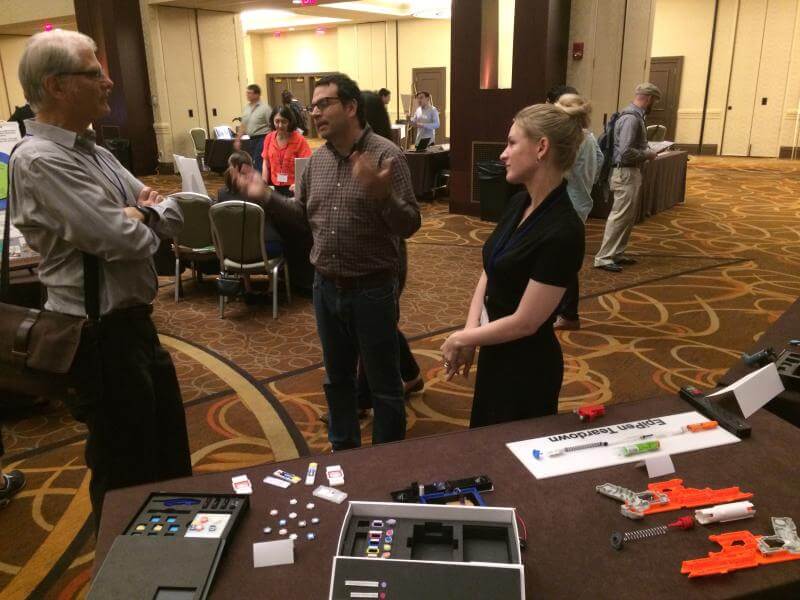Construction Sets for DIY Medical Technologies and their Black Box Counterparts
Jose Gomez-Marquez, MIT;Nikolas Albarran, MIT; Amy Moran-Thomas, MIT; Jose F Gomez-Marquez, MIT
Boston 2017: Design and Planning

The growing disparities in health resources, emergence of long tail medical devices to address orphan conditions and the demedicalization of a growing sectors of health devices is revealing and evolving patterns of DIY fabrication in healthcare settings around the world. This is exhibit will host an array of modern health technologies which feature a spectrum of access and disparities scores ranging from highly blackboxes devices, analog transparent designs, and health technology construction sets built for open ended reproducibility and community design. Interact with examples of “black box” medical technologies, such as proprietary rapid diagnostic tests and consumer fitness bands are driven by an array of propriety chemistry, mechanical design and closed software algorithms. Their combinations have led to disparity by design, such as the recent case of autoinjectors whose pharmaceutical components are commoditized active pharmaceutical ingredients wrapped in a closed hardware architecture. What are the implications of more hardware and more software creating proprietary boundaries on otherwise accessible solutions? How are healthcare providers and patients shifting their traditional role and learning to hack the technology back? What can we learn from transparent designs in medicine, such as stethoscopes and thermometers, undergoing digital transformations that create questions of access, affordability and data ownership rights? Our goal is to create a platform for discussion by demistyfing the technological drivers that convert transparent designs into closed ones; that may often create the illusion of enhanced care based on data creation; and widen the gap between designers and users. One experimental response the present situation is the diffusion of construction set methodology as a fabrication and design vehicle. Medical construction sets for health include an array of approaches that allow non-designers to create functional medical devices. Examples include Lego-like assay blocks that allow attendees to create their own rapid diagnostics, modularized digital health components that transform analog medical devices into “smart” transparent design devices, examples from hospital embedded makerspaces where nurses, doctors and patients are using tools such as 3-D printers, microcontrollers and hospital supplies to attend to just in time needs of patients. These are part of an ongoing approach to democratize medical fabrication that is highlighting policy implications for regulatory strategy, intellectual property, medical education and patient ethics.
Published: 01/30/2023
